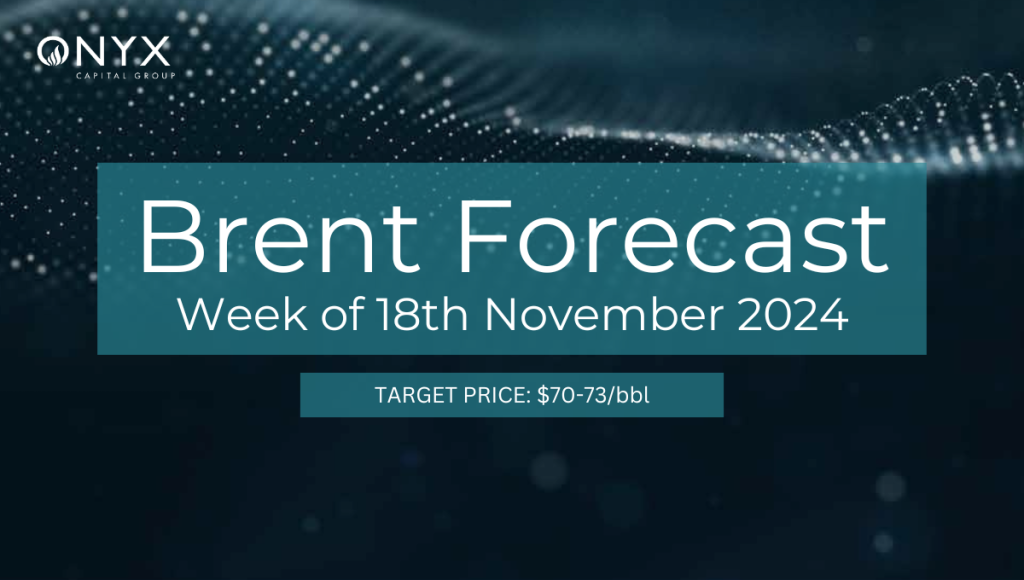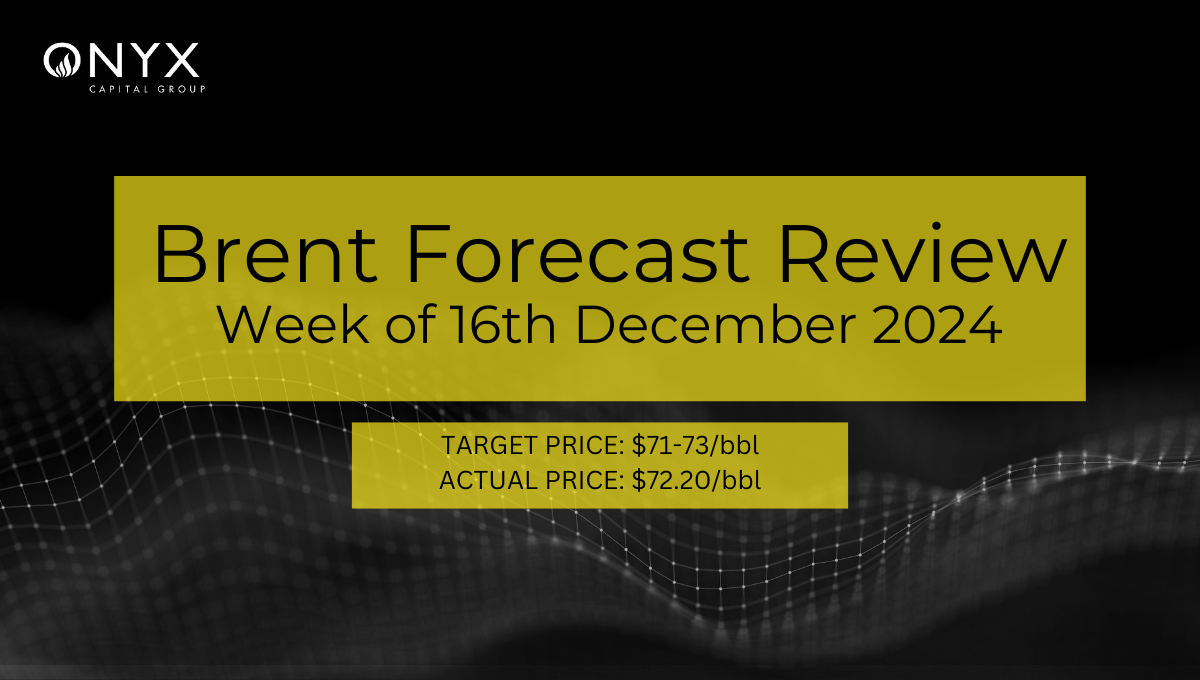The Jan’25 Brent future is trading near recent bottoms, with a wedge forming with lower highs from early October and a quite weak momentum in the bear trend shown by a negative but small MACD differential. We anticipate a short period of price consolidation as volatility drops ahead of a more significant breakout. Therefore, we have a weekly target of $70.00 – $73.00/bbl for Jan’25 Brent futures. Key factors this week are:
Chinese data shows potential stabilisation
Lack of significant change in positioning following the US election
Well-absorbed geopolitical risk from Russia

The global economy’s health remains a concern, with pessimism dampening the demand picture and array of fundamental balances, including OPEC+ reducing their demand outlook last week. China is the primary concern, although China’s latest data presents a mixed picture: industrial production growth in October slightly underperformed at 5.3% (below the 5.6% forecast and 5.4% previous), while retail sales surged, beating expectations with a 4.8% rise (well above the 3.8% estimate and up from 3.2% previously). Meanwhile, house prices continued to decline in October, though the pace of the drop has slowed. This shows the possibility that China’s economy has begun to stabilise somewhat. However, one month of data does not guarantee a trend. In the US, Jerome Powell was less dovish, indicating that the Fed is not hurrying to cut rates, which helped increase dollar strength and pushed the odds of a 25bp rate cut lower. There is less than a 60% chance of a cut on 18 Dec.
ICE COT data released on 15 Nov, for the week to 12 Nov, shows the impact of the US election and its fallout on Brent. Long and short spec funds added to their positions on a net basis by 8.5% and 36.6%, respectively. Although this was a fairly significant increase in shorts, it failed to be a monumental change in the total net positioning or price action, considering the huge impact on other asset classes. Bitcoin topped its previous all-time high of over $90,000. Trump has pledged support for crypto, including a proposed US Bitcoin stockpile, but questions remain about feasibility. The USD index rose to its highest level in 13 months as Trump’s tariff plans and tax changes may increase inflation in the States. The stark contrast between the rangebound regime in crude markets shows the wait-and-see attitude of the market. The fairly static positioning following the election shows the potential gap between the “drill baby drill” policy proposals and the practical reality of what Trump can control in the market.
President Biden has approved Ukraine’s use of long-range missiles within the Kursk region; these ATACMS have a range of 186 miles. In September, Putin warned that if Ukraine used Western long-range missiles to strike Russian territory, Moscow would view it as NATO’s direct involvement in the war, “fundamentally changing” the nature of the conflict. Ukraine’s President Zelenskyy acknowledged reports about using ATACMS, which may dampen the potential for geopolitical risk premium on crude as it gives time to move assets away from the potential firing zone, removing the element of surprise. There has been a moderation in Middle Eastern tensions. Although war persists with Israel’s continued strikes in Lebanon, Iran’s involvement (which was what caused the significant increase in premia last month) has taken a back seat.


